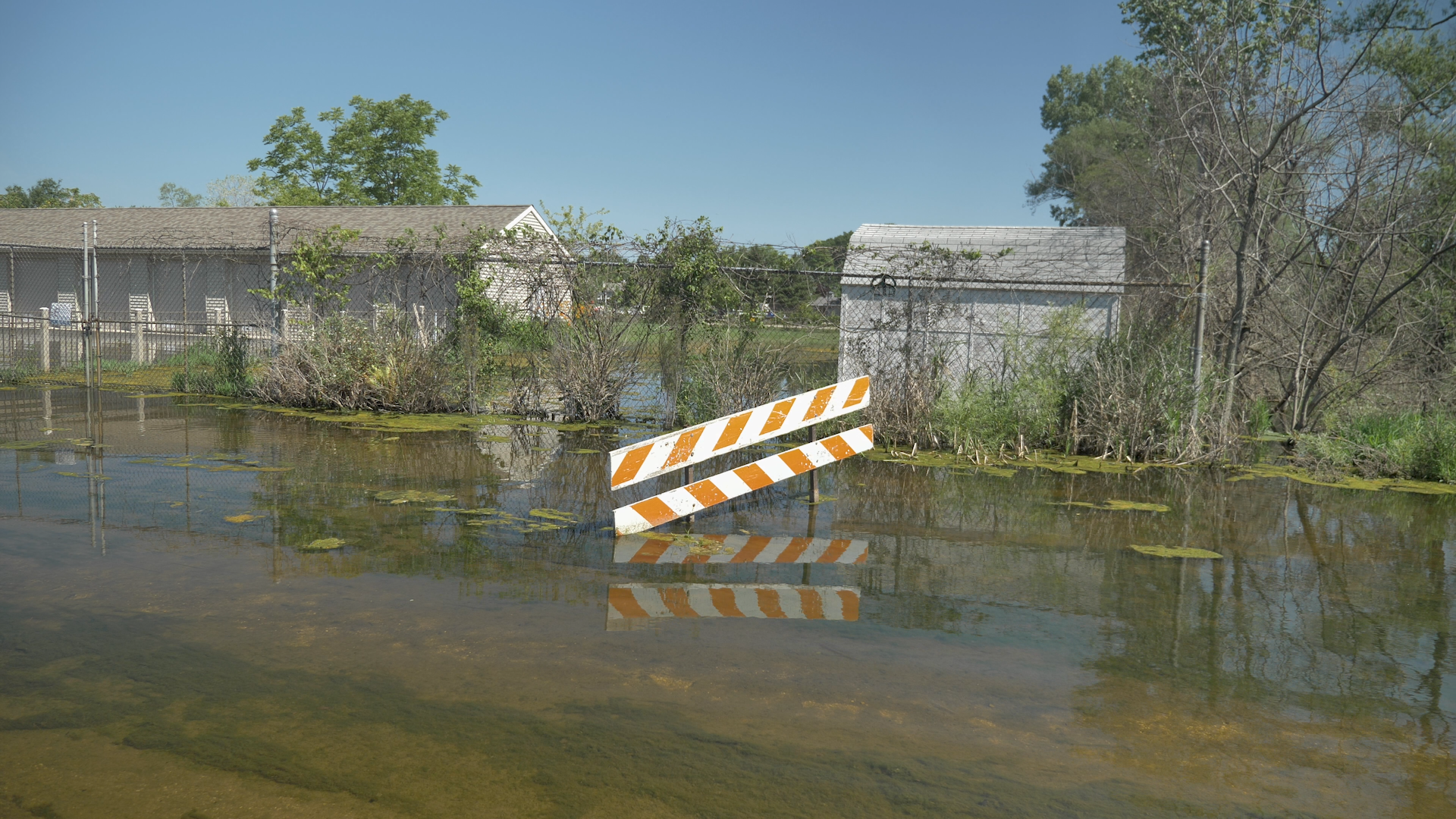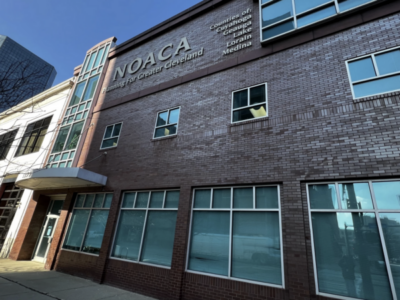
By Kimberly M. S. Cartier, Eos

This story originally appeared in Eos and is republished here as part of Covering Climate Now, a global journalism collaboration strengthening coverage of the climate story.
Residents of New Orleans are no strangers to floods and the losses that follow. From Katrina in 2005 to Ida in 2021, Gulf Coast hurricanes have cost the people of New Orleans hundreds of billions of dollars over the past 20 years, in addition to the loss of culturally rich historical sites and irreplaceable lives.
No one knows this loss better than the people who live in and work with New Orleans communities. Jeff Supak is the executive director of Water Wise Gulf South, a collective of community organizations in New Orleans with the goal of preventing flood losses in their neighborhoods through green infrastructure. “The communities that we work in are low-lying, [are] prone to chronic flooding, and are majority Black,” he said. “Climate change and a poorly maintained gray infrastructure system are wreaking havoc in these communities and will continue to do so unless change happens.”
Current U.S. flood risk maps, which show regions of the country that are likely to sustain future damages from floods, are based on historical records of where flooding has occurred. But according to a recent Nature Climate Change study, those maps fail to account for the increasing threat of climate change, projected population changes, and infrastructure development.
When those factors are accounted for, the new flood risk maps paint a stark picture: By 2050, annual U.S. flood losses are predicted to rise to $40.6 billion from $32.1 billion, and that increased loss will not be borne equally by all. Urban and rural areas with predominantly Black communities will see at least a 20% increase in flood risk, whereas majority white regions will see little to no change in their risk. What’s more, areas with lower-income populations will continue to face more risk than affluent ones.
“The mapping clearly indicates Black communities will be disproportionately affected in a warming world, in addition to the poorer white communities which predominantly bear the historical risk,” Oliver Wing, lead researcher on the study, said in a statement. “Climate change combined with shifting populations presents a double whammy of flood risk danger.” Wing is a geographer and chief research officer at Fathom Global in Bristol, U.K.
Inequitable Flood Loss Risk
Wing and his team created their projected flood loss maps under the modest Representative Concentration Pathway (RCP) 4.5 climate change scenario outlined by the Intergovernmental Panel on Climate Change, which predicts climate patterns if emissions peak in 2040 and then decline. They analyzed those data in concert with projected population and demographic shifts from the U.S. Census Bureau as well as with building and infrastructure data from the U.S. Army Corps of Engineers. Combined, these data sets allowed the researchers to predict where people are likely to live in 2050, where infrastructure is likely to develop, and where flooding (and associated damage) is likely to occur.
“If we want to understand flood risk in the future,” Wing told ABC News, “the most important thing is understanding where people are going to live, more so than how weather patterns are changing.”
Under RCP 4.5, people across the United States on average will incur an additional $8.5 billion in losses from flooding in 2050, a 26.4% increase over 2020 values. Compared with regions that experience flooding losses today, future losses will be concentrated along the Gulf and Atlantic coasts north to New Jersey, whereas Appalachia and the West Coast will feel a reprieve from flood losses.
When the researchers cross-referenced the projected flood risk maps with projected demographic data for those areas, it became clear that the burden of future flood loss would not be borne equally by people of all races and economic strata. Today, impoverished white populations face the greatest flood loss risk, but by 2050 that burden is projected to shift to rural and urban Black communities, especially poorer ones, from Texas through Florida and up to Virginia.
“That raises very important social justice implications for how we ensure that the policies to deal with this address this quite severe inequity,” Wing said, adding in a separate interview that “what we’re seeing is that those with the least capacity to respond to these disasters are being asked to shoulder the burden. That’s just fundamentally wrong.”
Can’t Afford to Wait
In New Orleans, one of the regions projected to bear even more flood-related loss in the future, Black communities are already working to protect their neighborhoods. “To date,” Supak said, “we have installed over 160 green infrastructure installations that manage up to 100,000 gallons of storm water per rain event, and we have planted over 500 trees to combat the urban heat island effect.” The Water Wise collective has also created a network of more than 100 neighborhood leaders “advocating for more green infrastructure in their communities,” comprehensive lists of green infrastructure priorities for their neighborhoods, and policy initiatives to implement them. A recent report estimated that these projects will bring up to $17.8 million annually in ecosystem services.
Wing and his colleagues hope that their updated maps will be used by communities and federal programs to move development away from risk-prone areas and inform equitable flood adaptation policies.
But some communities of Black, Indigenous, and People of Color (BIPOC) already feel the urgency to protect their homes and neighbors. “BIPOC communities must become engaged and educated about the risks of climate change,” said Angela Chalk, executive director of Healthy Community Services, which is part of the Water Wise collective. Chalk is also an AGU Community Science Fellow.
“Community organizations across this country are becoming empowered to assist residents to make strategic adaptation measures. BIPOC can no longer afford to wait for government’s slow response. Community-led actions will change behaviors as well as expectations from large corporations and government.”
—Kimberly M. S. Cartier (@AstroKimCartier), Staff Writer
Catch more news on Great Lakes Now:
Risky Drinking Water Pathogen Has Outsized Effect on Black Americans
Lower Rates: New flood risk assessment will reduce insurance rates in the Great Lakes region
Featured image: Flooding streets in South Haven, Mich. (Great Lakes Now Episode 1016)
1 Comment
-
Hopefully after the IIJA bill, the government will look into such issues more seriously.




